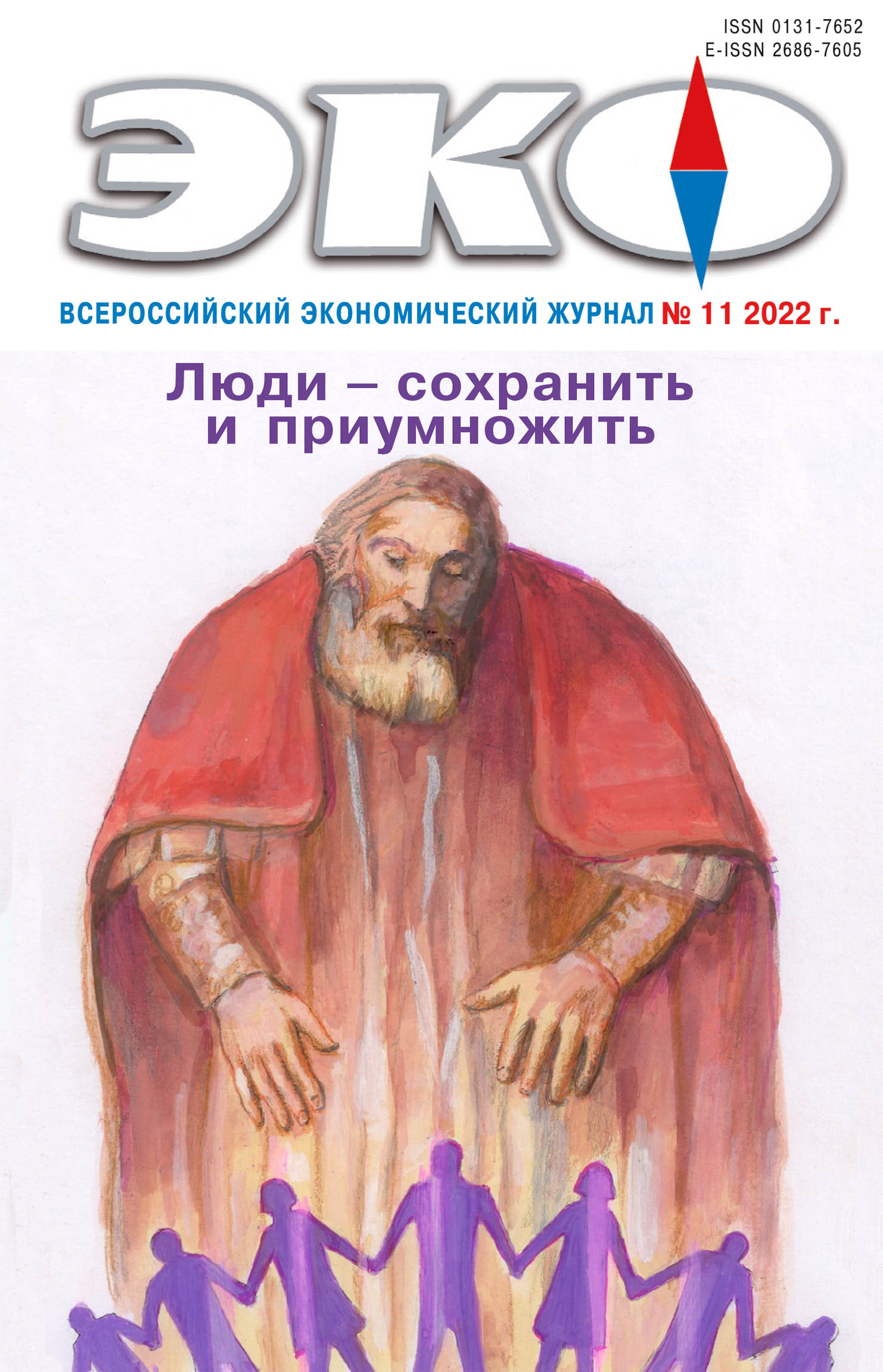People - Preserve and Grow
Published 2022-11-07
Keywords
- human capital; moral deterioration; physical deterioration; degradation of human capital; demography; aging population
How to Cite
1.
Slepenkova Ю. The Degradation of Human Capital in Russia. ECO [Internet]. 2022 Nov. 7 [cited 2026 Jan. 22];52(11):8-22. Available from: https://ecotrends.ru/index.php/eco/article/view/4527
Abstract
The study models the dynamics of Russia’s accumulated human capital. According to the calculations, the new human capital being formed still compensates for the current losses, but a shortage of new human capital put in place is expected in the near future. This is caused both by the low cost of human capital and by demographic problems in Russia, including a decline in the birth rate and an increase in the share of the disabled population. The current migration policy does not help to solve the problem either: the share of immigrants with higher or secondary vocational education is low, while among emigrants to economically developed countries the same indicator was quite high.References
- Асланов Д. И. Человеческий капитал – важнейший фактор экономического роста // Journal of new economy. 2010. № 2 (28). С. 71–75.
- Баранов А. О., Павлов В. Н., Слепенкова Ю. М., Тагаева Т. О. Использование динамической межотраслевой модели с блоком человеческого капитала в прогнозировании экономики России // Проблемы прогнозирования. 2018. № 6 (171). С. 104–116.
- Добрынин А. И., Дятлов С. А., Цыренова Е. Д. Человеческий капитал в транзитивной экономике: формирование, оценка, эффективность использования. СПб: Наука, 1999. 309 с.
- Капелюшников Р. И. Записка об отечественном человеческом капитале: препринт WP3/2008/01. Серия WP3 «Проблемы рынка труда». М.: Изд. дом ГУ ВШЭ, 2008. 56 c.
- Матершева В. В. Особенности износа человеческого капитала в современной экономике России // Современная экономика: проблемы и решения. 2016. № 2(74). С. 8–16. DOI: 10.17308/meps.2016.2/1391
- Полани М. Личностное знание. М.: Прогресс, 1985. 344 с.
- Тетеринец Т. А. Оценка человеческого капитала с позиции инвестиционных расходов // Проблемы прогнозирования. 2022. № 2(191). С. 48–57. DOI: 10.47711/0868–6351–191–48–57
- Becker G. S. Investment in Human Capital: A Theoretical Analysis // The Journal of Political Economy. 1962. Vol. 70, No. 5. Pp. 9–49. URL: https://www.jstor.org/stable/1829103
- Coleman J. Social Capital in the Creation of Human Capital // American Journal of Sociology. 1988. Vol. 94. Pp. 95–120. URL: https://www.jstor.org/stable/2780243
- Dinerstein M., Megalokonomou R., Yannelis C. Human Capital Depreciation // CESifo Working Paper. 2020. No. 8614. DOI: http://dx.doi.org/10.2139/ssrn.3711890
- Görlich D., de Grip A. Human Capital Depreciation during Hometime // Oxford Economic Papers. 2009. No. 61. Pp. 98–121. https://doi.org/10.1093/oep/gpn044
- McFadden D. Human Capital Accumulation and Depreciation // Review of Agricultural Economics. 2008. 30(3). Pp. 379–385. URL: https://www.jstor.org/stable/30225880
- Melianova E., Parandekar S., Volgin A. Returns to Education in the Russian Federation: Does Depreciation Explain Some Recent Trends? // World Bank, Washington, DC. 2020. URL: https://openknowledge.worldbank.org/handle/10986/34454
- Murillo I. Returns to Education and Human Capital Depreciation in Spain // European Regional Science Association. ERSA Conference Papers. 2006. 23 p. URL: https://www.econstor.eu/handle/10419/118190
- Schultz T. Investment in Human Capital // The American Economic Review. 1961. Vol. 1, No. 51. Pp. 1–17. URL: https://www.jstor.org/stable/1818907
- Slepenkova Yu. M. Loss of Human Capital Caused by Emigration // Studies on Russian Economic Development. 2022. Vol. 33, No. 4. Pp. 432–439.
- Weber S. Human capital depreciation and education level // International Journal of Manpower. 2014. Vol. 35, No. 5. Pp. 613–642. https://doi.org/10.1108/IJM-05–2014–0122

